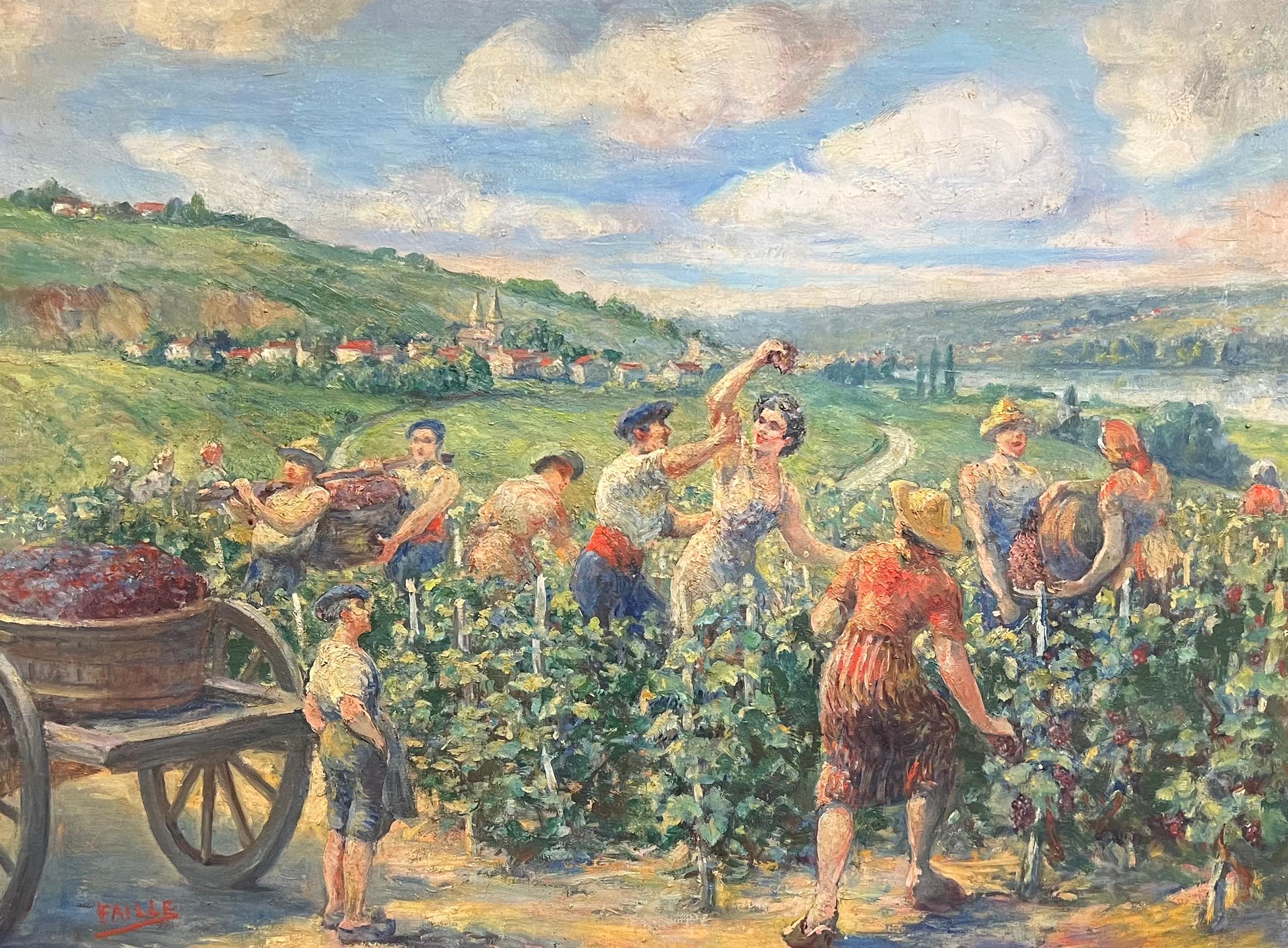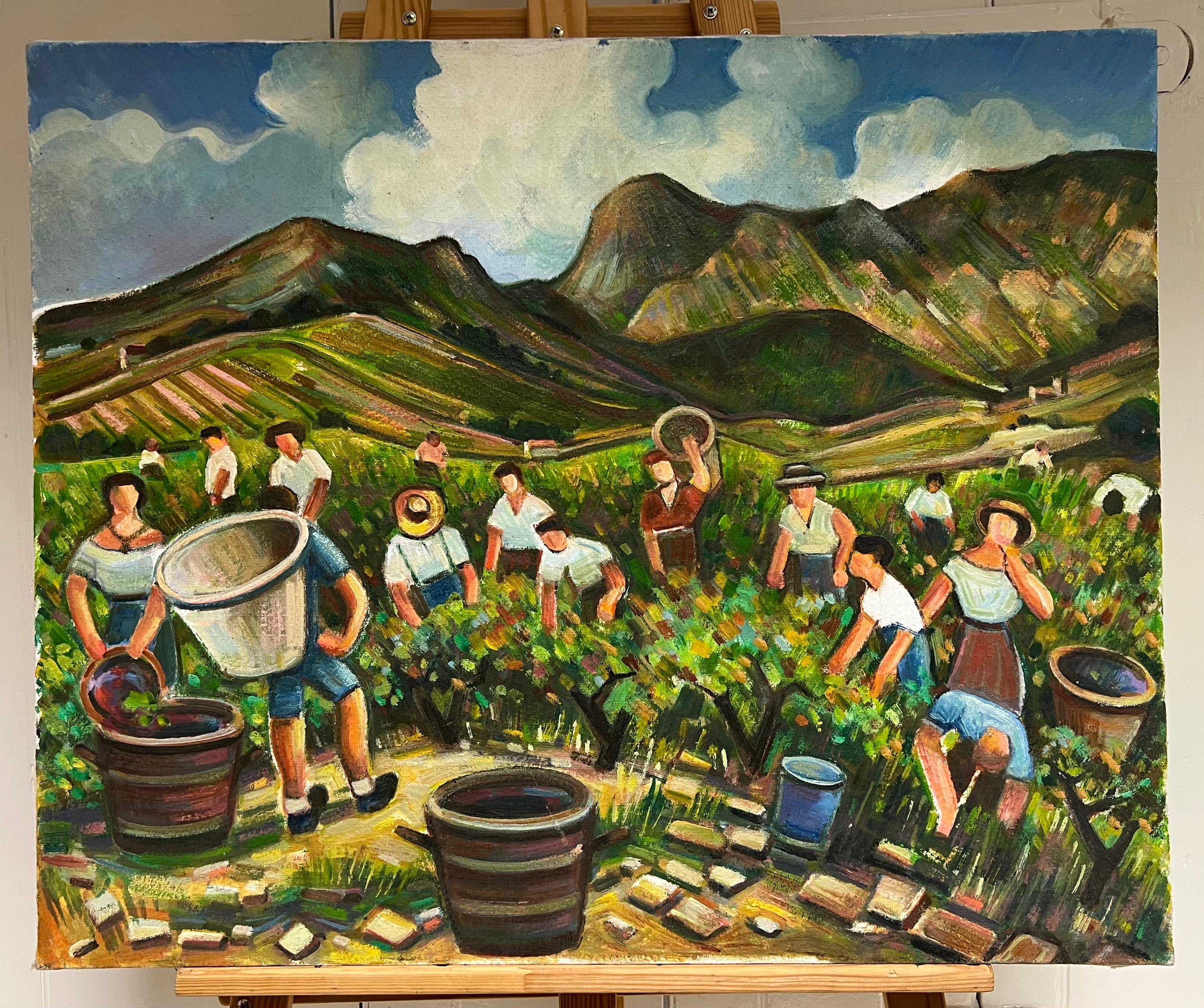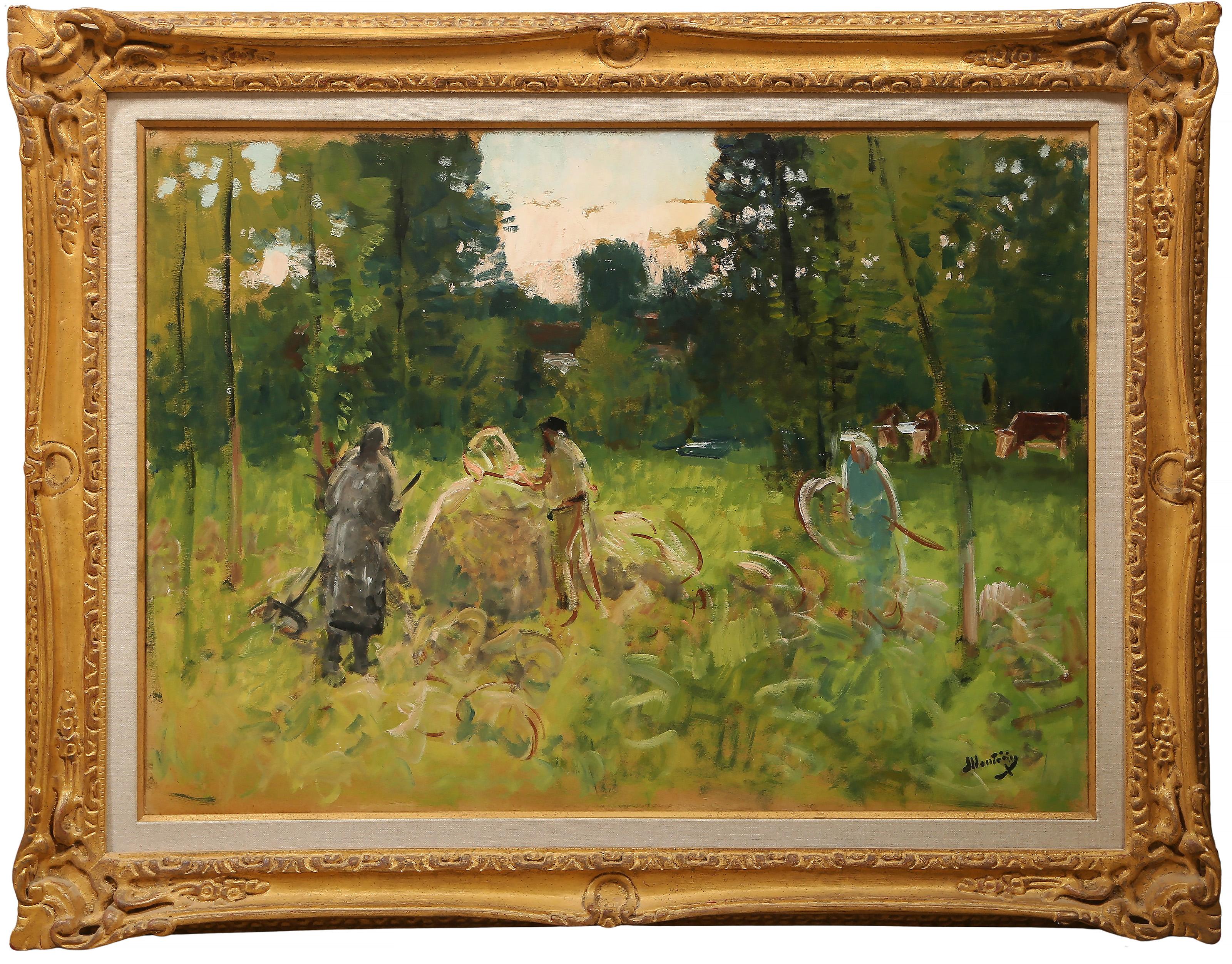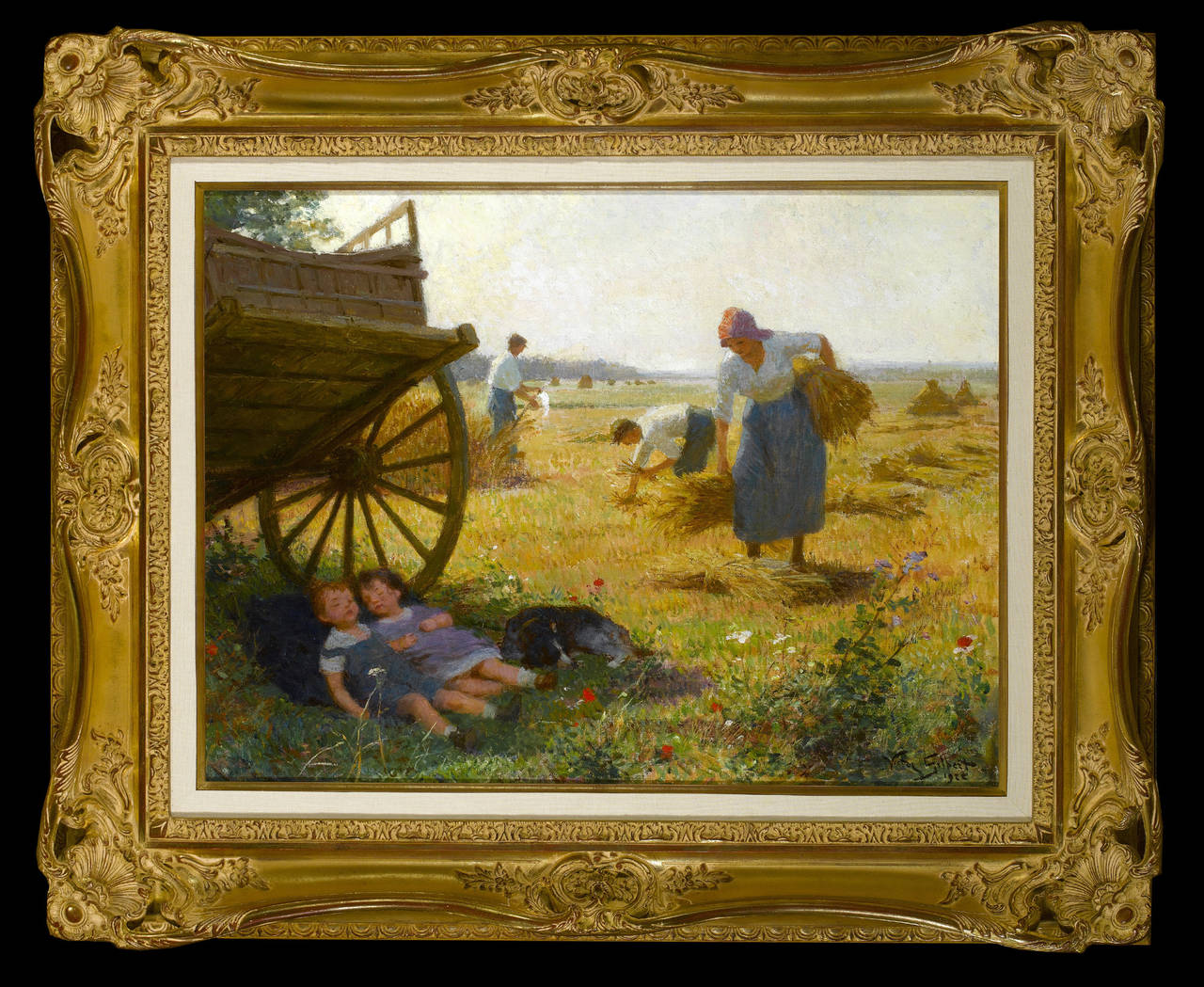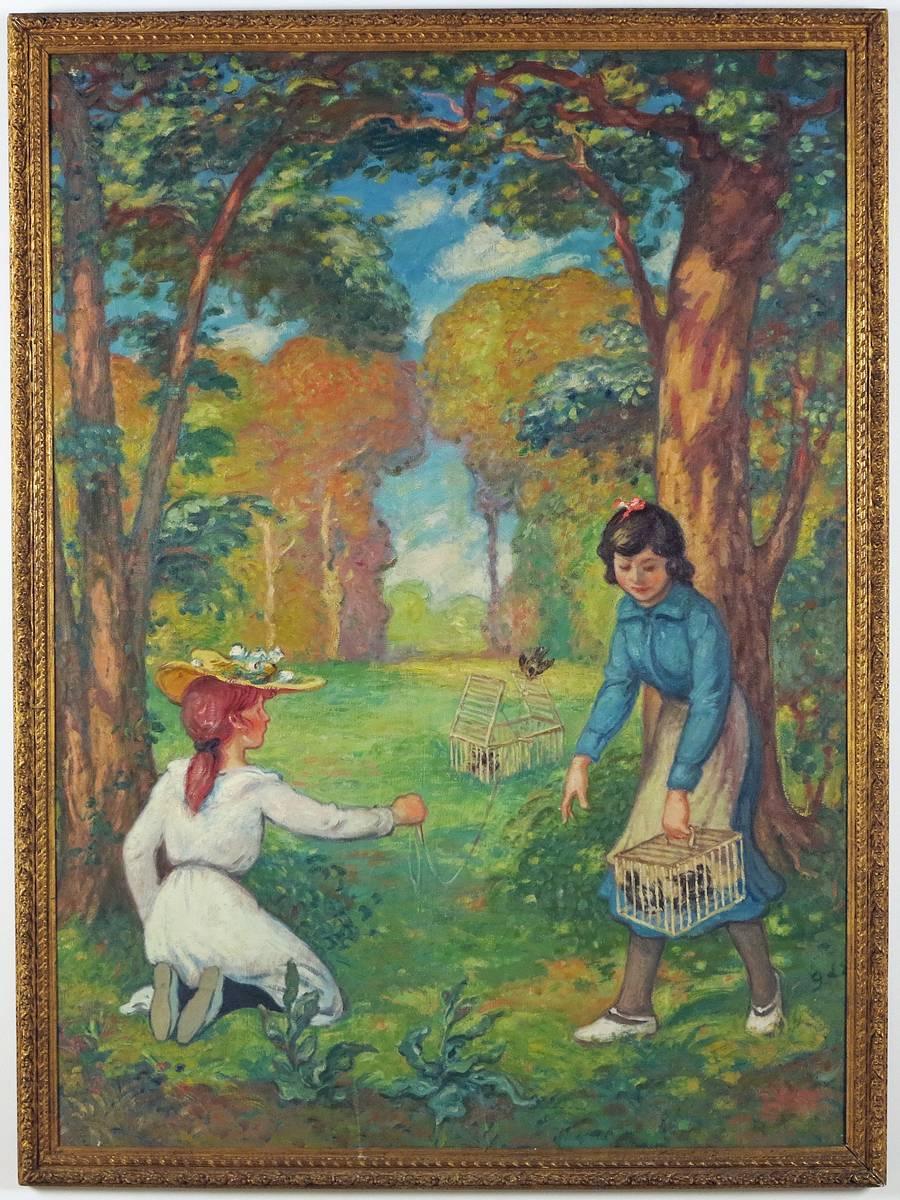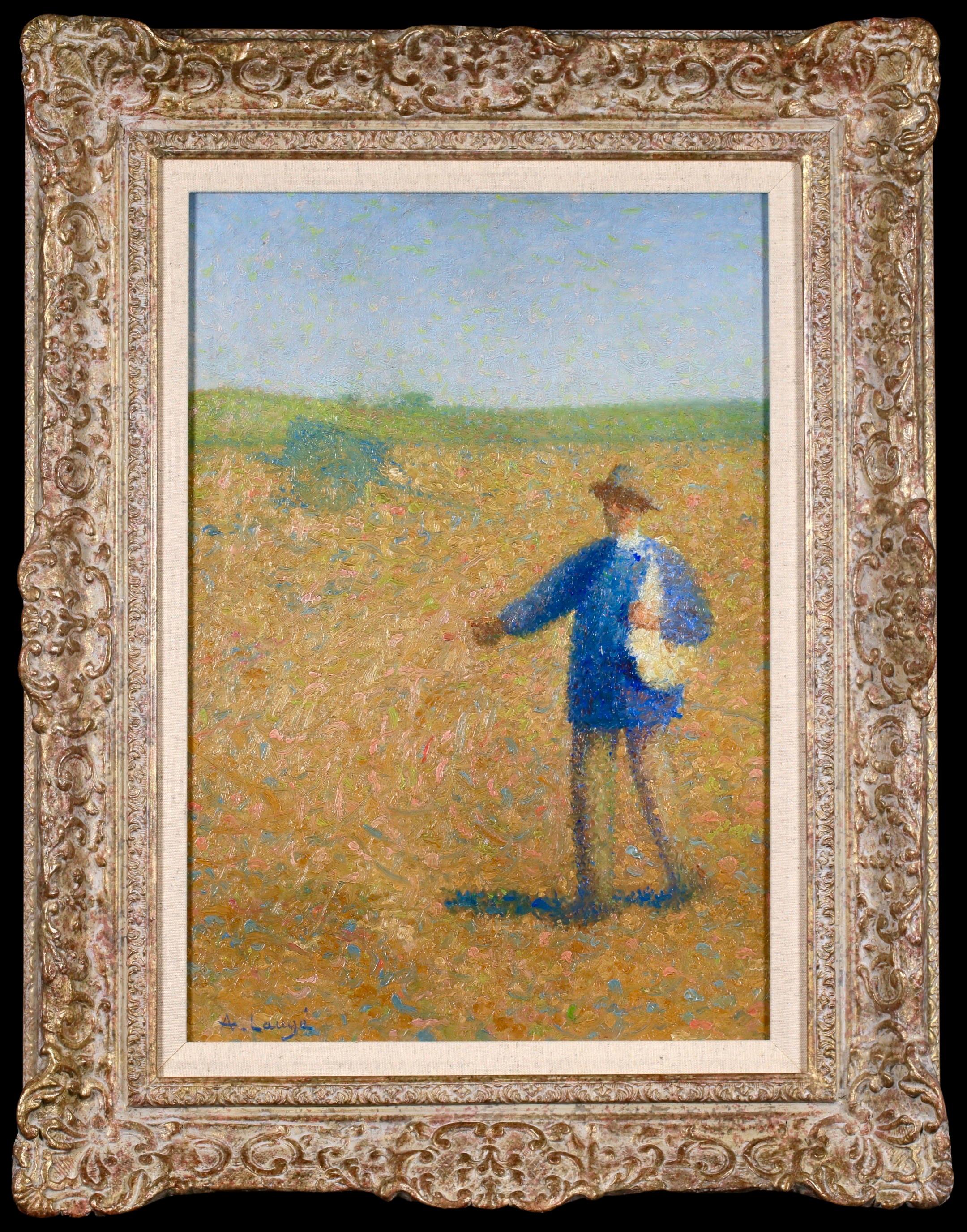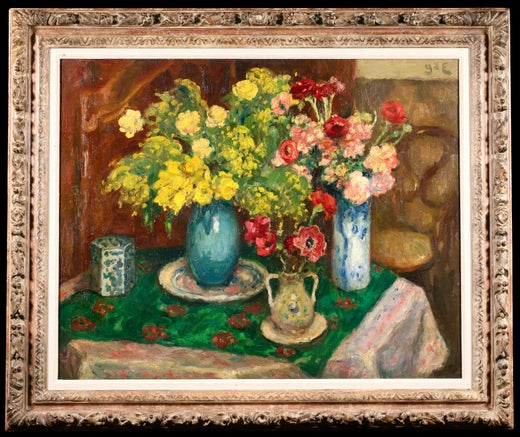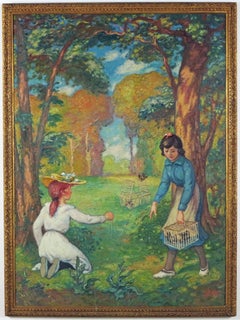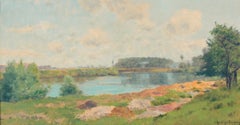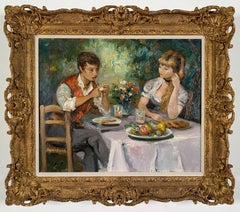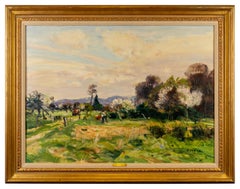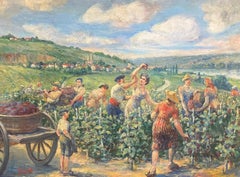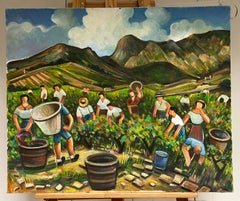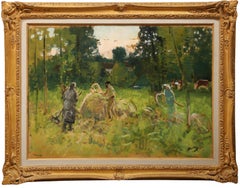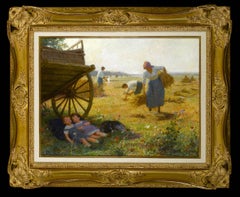Items Similar to Les Vendanges
Want more images or videos?
Request additional images or videos from the seller
1 of 4
Georges d'EspagnatLes Vendanges
$64,500
£48,980.06
€56,618.08
CA$90,648.62
A$100,937.12
CHF 53,377.93
MX$1,228,343.05
NOK 672,840.45
SEK 633,914.61
DKK 422,555.68
About the Item
Georges d'Espagnat
French, 1870 - 1950
Les Vendanges
Signed gdE (lower left)
Oil on canvas
67 by 43 in. W/frame 71 by 47 in.
Born at Melun on 14th August 1870, Georges d’Espagnat went on to become one of the most individualistic of 20th century French painters. Although associated with many of the greatest names in 20th century art, and though his work has at various times been identified as Fauve, Nabis or just plain Impressionist, he retained his own individuality. As Bénézit notes: “D’Espagnat, sans cesser d’être un Indépendant, a pris une place marquante parmi les maîtres modernes.”
Having moved to Paris at the age of 18 he declined the academic training of the Ecole des Beaux-Arts and chose instead to independently study the works of the Old Masters in the Louvre. He also travelled to Italy where he particularly admired the work of the Venetians, Titian and Tintoretto. In 1891 he took part in the Salon des Refusés and in the following year exhibited four paintings at the Salon des Indépendants.
In 1895 he had his first one-man show in Paris and three years after that a show of his work was held at Durand-Ruel Gallery, an association that was to continue for the rest of his life including exhibitions at their New York gallery. Though he himself never quite achieved the greatness of his peers, he was associated with greatness for much of his life. A close friendship with Renoir was only terminated by the master’s death in 1919, a group exhibition of 1907 at the Marcel Bernheim Gallery included himself, Bonnard, Cézanne, Matisse, Pissarro, Rouault, Seurat and Toulouse-Lautrec while a later exhibition at the same venue in 1926 consisted of d’Espagnat, André, Bonnard, Braque, Chagall, Matisse, Picasso and Signac. From 1936 onwards he served as a Professor at the Ecole Nationale Superieure des Beaux-Arts in Paris and he died in the French capital on 17th April, 1950. In the following year he was honoured by a retrospective exhibition at the Salon d’Automne, of which he had been Vice-President for many years.
Examples of his work are in many of the world’s most important museums including the Museum of Fine Arts, Boston, the Musée Royal des Beaux-Arts, Brussels, the Metropolitan Museum of Art, New York, the Art Institute, Chicago, the Pushkin Museum, Moscow, the Musée d’Orsay and the Musée d’Art Moderne, Paris, and the National Museum of Western Art, Tokyo.
Authentication:
This work will be included in the forthcoming catalogue raisonné being prepared by Jean-Dominique Jacquemond.
Provenance:
Schoneman Galleries, Inc., New York
Private Collection, New York (acquired from the above in 1968)
Acquired from the above
Le Trianon Fine Art & Antiques
Art D255
- Creator:Georges d'Espagnat (1870-1950, French)
- Dimensions:Height: 67 in (170.18 cm)Width: 43 in (109.22 cm)Depth: 1 in (2.54 cm)
- More Editions & Sizes:67 by 43 in. W/frame 71 by 47 in.Price: $64,500
- Medium:
- Movement & Style:
- Period:
- Condition:
- Gallery Location:Sheffield, MA
- Reference Number:Seller: Art D2551stDibs: LU70032063733
Georges d'Espagnat
Georges d’Espagnat was born in 1870 in Melun, France. He was a painter, muralist, illustrator and theater designer. His family moved to Paris in the 1880s and at the age of 18 he declined the academic training of the Ecole des Beaux-Arts and chose instead to independently study the works of the Old Masters in the Louvre and attend classes at the free academy. In 1891 d’Espagnat began exhibiting at the Salon des Refusees and in the following year exhibited four paintings at the Salon des Independants. He later exhibited at the Salon of the Societe Nationale as well. Although associated with many of the greatest names in 20th century art, and though his work has at various times been identified as Fauve, Nabis or Impressionist, he retained his own individuality. He was influential in the art circles of his time with the likes of Matisse, Gauguin, Picasso, Pissarro and Chagall. d’Espagnat also became closely acquainted with many of the Impressionists and Post-Impressionists including Renoir, Vuillard, Andre, Bonnard and Denis. In 1895 he had his first solo show in Paris and three years later a show at Durand-Ruel Gallery. He was part of a group exhibition in 1907 at the Marcel Bernheim Gallery along with Bonnard, Cezanne, Matisse, Pissarro, Rouault, Suerat and Toulouse-Lautrec while in 1926 his works were a part of another exhibition at the same gallery along with Andre, Bonnard, Braque, Chagall, Matisse, Picasso and Signac. In 1903 d’Espagnat was one of the founding members of the Salon d’Automne and, a year later, became the vice president. In 1906 he collaborated on the illustrations for Remy de Gourmont’s Sixtine, and later worked with Alphonse Daudet on his book, L’Immortel. Traveling extensively throughout his lifetime, D’Espagnat visited Britain, Germany, Italy, Portugal, Morocco and Spain. His work can be found in many museums including the Museum of Fine Arts, Boston; the Musee Royal des Beaux-Arts, Brussels; the Metropolitan Museum of Art, New York; the Art Institute, Chicago; the Pushkin Museum, Moscow and the Musee d’Orsay.
About the Seller
4.3
Vetted Professional Seller
Every seller passes strict standards for authenticity and reliability
1stDibs seller since 2017
55 sales on 1stDibs
Typical response time: 12 hours
- ShippingRetrieving quote...Shipping from: Sheffield, MA
- Return Policy
Authenticity Guarantee
In the unlikely event there’s an issue with an item’s authenticity, contact us within 1 year for a full refund. DetailsMoney-Back Guarantee
If your item is not as described, is damaged in transit, or does not arrive, contact us within 7 days for a full refund. Details24-Hour Cancellation
You have a 24-hour grace period in which to reconsider your purchase, with no questions asked.Vetted Professional Sellers
Our world-class sellers must adhere to strict standards for service and quality, maintaining the integrity of our listings.Price-Match Guarantee
If you find that a seller listed the same item for a lower price elsewhere, we’ll match it.Trusted Global Delivery
Our best-in-class carrier network provides specialized shipping options worldwide, including custom delivery.More From This Seller
View AllLe Piège à Oiseaux
By Georges d'Espagnat
Located in Sheffield, MA
Georges D'espagnat
French, 1870 - 1950
Le Piège à Oiseaux
Signed gdE (lower right)
Oil on canvas
66 3/4 by 48 1/2 in. W/frame 70 ¾ by 52 ½ in.
Born at Melun on 14th August 1870, G...
Category
1910s Post-Impressionist Figurative Paintings
Materials
Oil
French Countryside
Located in Sheffield, MA
Charles Charlay-Pompon
French, 1854-1914
French Countryside
Oil on canvas
Signed lower right
11 by 21 in. w/frame 16 ½ by 26 ½ in.
Charles Charl...
Category
1880s Impressionist Landscape Paintings
Materials
Oil
Djeuner Champtre
By Marcel Dyf
Located in Sheffield, MA
Marcel Dyf
French, 1899-1985
Djeuner Champtre
Oil on canvas
23 ½ by 28 ¾ in. W/frame 31 ½ by 36 ¾ in.
Signed lower left
Marcel Dyf (Marcel Dreyfus) was born in Paris on October 7,...
Category
1950s Post-Impressionist Figurative Paintings
Materials
Oil
Landscape with Figures
By Gaston Sebire
Located in Sheffield, MA
Gaston Sebire
French, 1920-2001
Landscape with Figures
Oil on canvas
31 by 41 ½ in, w/ frame 38 by 48 ½ in
Signed lower right
Gaston Sebire was born August 18, 1920, in Saint-Samso...
Category
Late 20th Century Impressionist Landscape Paintings
Materials
Oil
Figures in a Landscape
By Lucien Adrion
Located in Sheffield, MA
Lucien Adrion
French, 1889-1953
Figures in a Landscape
Oil on canvas
22 by 33 in, w/ frame 29 ½ by 39 ¾ in
Signed lower left
Lucien Adrion was born in Strasbourg, France in 1889 an...
Category
Early 20th Century Impressionist Landscape Paintings
Materials
Oil
Parisian Street Scene
Located in Sheffield, MA
Merio Ameglio
Italian, 1897-1970
Parisian Street Scene
Oil on Canvas
18 by 21 ½ in. W/frame 26 by 29 ½ in.
Signed lower left
Merio noted impr...
Category
1940s Post-Impressionist Landscape Paintings
Materials
Oil
You May Also Like
The Grape Harvest Large 1920's French Signed Oil Harvest Workers Vineyard
Located in Cirencester, Gloucestershire
The Harvest
by Louis Faille (French 1878-1964
signed oil on canvas, framed
framed: 32.5 x 40 inches
canvas : 22 x 31 inches
Provenance: private collection, Paris
Condition: very good...
Category
Early 20th Century Post-Impressionist Figurative Paintings
Materials
Oil
Vineyard Workers Grape Harvest South of France Large 20th Century French Oil
Located in Cirencester, Gloucestershire
The Grape Harvest
by Max Toutain (1935-2006)
oil painting on canvas, unframed
canvas : 24 x 29 inches
Provenance: all the paintings we have by this artist have come from the artists ...
Category
20th Century Post-Impressionist Figurative Paintings
Materials
Oil
Les Foins, Impressionist Oil on Canvas Painting by Pierre Eugène Montézin
By Pierre Eugène Montezin
Located in Long Island City, NY
Pierre Montezin, French (1874 - 1946) - Les Foins, Year: 1938, Medium: Oil on Canvas, signed lower right, Size: 23.75 x 31.75 in. (60.33 x 80.65 cm), Frame Size: 31.25 x 39.5 inc...
Category
1930s Impressionist Nude Paintings
Materials
Oil
French landscape painting with children, figures & field Scene 'The Harvest'
By Victor Gabriel Gilbert
Located in Shrewsbury, Shropshire
'The Harvest' is a stunning pastoral scene by Victor Gabriel Gilbert.
Victor Gabriel Gilbert was born in Paris, 13th February 1847. He studied for a perio...
Category
Late 19th Century Impressionist Landscape Paintings
Materials
Oil, Canvas
Les Semailles - Neo Impressionist Figurative Oil Painting by Achille Lauge
By Achille Laugé
Located in Marlow, Buckinghamshire
Signed figurative oil on canvas circa 1915 by French neo-impressionist painter Achille Lauge. The piece depicts a view of a farmer sowing seeds in field on a bright spring day.
Sign...
Category
1910s Impressionist Figurative Paintings
Materials
Canvas, Oil
'Mas Pres Eypalieres, Provence' French Vineyard Oil Painting
Located in Cirencester, Gloucestershire
'Mas Pres Eypalieres, Provence' French Landscape, Signed Oil Painting
By French artist 'De Tigny', 20th Century,
Signed by the artist on the right hand corner, signed, dated '67' and titled verso
Oil painting on canvas, unframed
Canvas size: 18 x 24 inches
Wonderful oil painting of a scenic view of a village in Provence, with an idyllic crop field in the forefront. This lovely oil painting is such a pretty impression of the French rural countryside, with hilly background and sun kissed houses with terracotta roof tiles...
Category
1960s Impressionist Landscape Paintings
Materials
Oil
